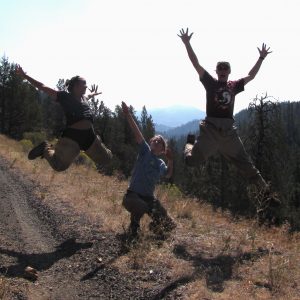Over the past month, I have continued working primarily in the office on data entry and writing academic papers. The most exciting moment of the last month was when I realized that a species of lichen, Polychidium dendriscum, was listed as found in Florida. This seemed unlikely because it is known from Alaska and the Pacific northwest. I requested loans from other herbaria in the United States to evaluate the species. It was incredible to handle specimens collected over 50 years ago. There is something magical about preserving specimens for future study, and I’m grateful for the opportunity. In addition, it was awesome to see who collected the specimens. One collector wrote a large book on Florida lichens. Hopefully, a specimen from the Smithsonian will arrive next week. The collector at the Smithsonian, Mason Hale, taught my supervisor Roger Rosentreter. I’m very excited to see that sample, and publish this paper very soon.
My time here is winding down, and this will be one of my last posts. One of the joys of working at the BLM State Office in Idaho has been the people here in the office. I learn something new from everyone. One of my coworkers, Pamela Hess, is a geologist. She can look at a geologic view and say, “that rock outcrop looks different.” When we approach it, and look around, there are unique ecosystems. Coming from Florida, I never appreciated how much geology defines a landscape and limits what grows in that area. From my coworker, Susan Filkins, I’ve learned to have a good attitude and how to better take care of myself (especially in the winter!) and not sweat the small stuff. From Dan Simpson and Brett van Paepeghem, I’ve learned more about horticulture and that gardens need love and caring and constant maintenance. From Roger Rosentreter, I’ve learned how to use my energy efficiently towards science and academia, as well as more than I ever imagined about lichens and life.
It all goes to show, if you love your work it will continue to grow and take you in ways and places you never imagined.
Barry
BLM Idaho State Office

















